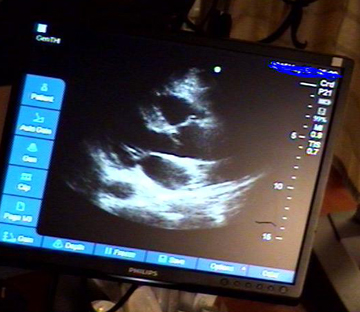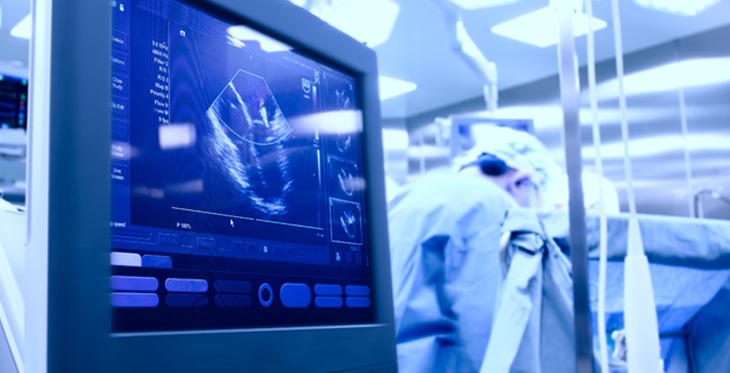In 2006, Banner Health made the decision to equip every one of their ICU beds with an eICU system that provides round-the-clock, “remote” care to critical care patients. Banner Telehealth’s eICU operations centers, located in Mesa, Ariz., Denver, Colo., Santa Monica, Calif., and Tel Aviv, Israel, has helped reduce patient mortality and shortened ICU stays.
In 2013, Banner took another step toward state-of-the-art intensive care, by implementing a tele-echocardiography system to relay patients’ echocardiographic images to the eICU in real time. This was achieved by training respiratory therapists to obtain the images and project them in real time to the tele-ICU physician via the tele-ICU Camera.
“At the bedside, point-of-care echocardiography is used as an extension of the physical exam. For us physicians working behind the camera, it’s like we can reach through the camera and examine the patient. We’re very excited about it,” says Nidhi Nikhanj, MD, assistant medical director of Banner Telehealth Services. “What we wanted to do was demonstrate that we can apply this powerful bedside tool in a tele-ICU platform.
 “Banner’s addition of tele-echocardiography to its eICU service is an outstanding example of a successful telemedicine service implementation in an organization focused on being ‘best-of-breed’ with respect to its telemedicine innovations,” says Ronald S. Weinstein, MD, founding director of the Arizona Telemedicine Program. “The services Banner is providing are invaluable.”
“Banner’s addition of tele-echocardiography to its eICU service is an outstanding example of a successful telemedicine service implementation in an organization focused on being ‘best-of-breed’ with respect to its telemedicine innovations,” says Ronald S. Weinstein, MD, founding director of the Arizona Telemedicine Program. “The services Banner is providing are invaluable.”
The development of this tele-echocardiography initiative started as a small pilot at two Banner hospitals, but is now being used at nine hospitals across Arizona, Dr. Nikhanj says.
“We’re performing, on average, between 25 and 40 of these procedures per month,” he says. “It’s a very, very useful tool in assessing critically ill patients, particularly when you’re trying to answer the question ‘Why is this patient in shock?’
“This allows us to obtain a diagnosis more quickly, and initiate therapy in a more timely manner.”
Point-of-care echocardiography is becoming standard of care in modern ICUs across the country, because its utility has been well documented in the literature. While Banner has not yet generated publications on the efficacy of tele-echocardiography, Banner has anecdotal evidence to demonstrate its effectiveness.
“A few months ago, one of my colleagues was called because a patient was decompensating in the cardiac unit,” Dr. Nikhanj says. “My colleague was able to diagnose the patient as having cardiac tamponade. He contacted the cardiac surgeon on call to come in the middle of the night and take the patient for surgical drainage of the effusion. The patient did very well.”
Tele-echocardiography also was able to quickly identify signs consistent with a pulmonary embolism in another patient with cardiopulmonary compromise. That patient also had a good outcome, Dr. Nikhanj says.
“It’s too difficult at this point to say whether this is generating a cost-savings,” he says. “But this is simply the right thing to do.”

